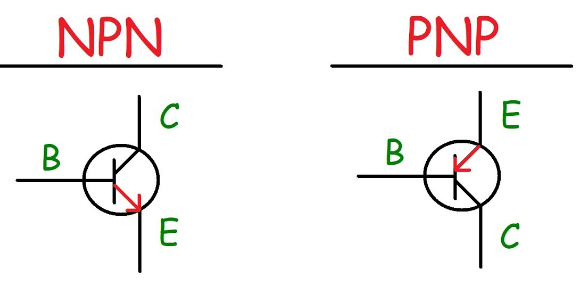OUTLINE:
PNP VS NPN
 211
211PNP and NPN are two types of bipolar junction transistors (BJTs) used in electronics. BJTs are three-terminal devices that can amplify and switch electronic signals. The difference between PNP and NPN transistors lies in their construction and operating characteristics.

PNP and NPN transistors are constructed with three layers of semiconductor material: the emitter, base, and collector. The emitter is heavily doped with impurities that give it a surplus of electrons (for NPN) or holes (for PNP), making it the source of charge carriers. The base is lightly doped, and the collector is moderately doped.
In an NPN transistor, the base is made of P-type material, and the emitter and collector are made of N-type material. In a PNP transistor, the base is made of N-type material, and the emitter and collector are made of P-type material.
The operating characteristics of PNP and NPN transistors are also different. In an NPN transistor, the base is negatively charged relative to the emitter, which allows electrons to flow from the emitter to the collector. In a PNP transistor, the base is positively charged relative to the emitter, which allows holes to flow from the emitter to the collector.
As a result of these differences, NPN and PNP transistors have different circuit configurations. In an NPN transistor, the emitter is connected to ground, and the collector is connected to a positive voltage source. In a PNP transistor, the emitter is connected to a positive voltage source, and the collector is connected to ground.
PNP and NPN transistors have different applications in electronics. NPN transistors are commonly used as switches and amplifiers in electronic circuits. They are also used in digital logic circuits, such as inverter and NAND gates.
PNP transistors are less commonly used than NPN transistors. They are used in circuits where the load is connected to a positive voltage source, such as in high-side switching applications. PNP transistors can also be used in complementary symmetry circuits, where NPN and PNP transistors are used together to amplify both positive and negative signals.
The main difference between PNP and NPN transistors is their construction and operating characteristics. NPN transistors are the most commonly used type of transistor and are used in a wide range of electronic applications. PNP transistors are less commonly used but have specific applications where they are the best choice. Understanding the differences between PNP and NPN transistors is essential for designing and troubleshooting electronic circuits.


Disclaimer: The views and opinions expressed by individual authors or forum participants on this website do not represent the views and opinions of Chipsmall, nor do they represent Chipsmall's official policy.

share this blog to:

